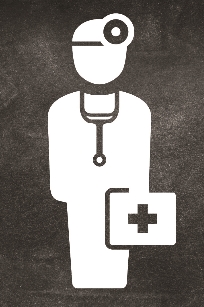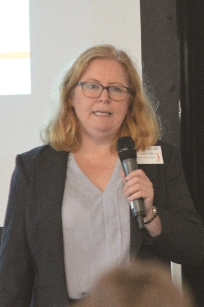ERGs are go
 Having taken the first steps to create a more accurate funding mechanism for clinical placements in 2013, Health Education England is now proposing a more granular currency based around education resource groups. Steve Brown reports
Having taken the first steps to create a more accurate funding mechanism for clinical placements in 2013, Health Education England is now proposing a more granular currency based around education resource groups. Steve Brown reports
The NHS spends about 1% of its revenue budget supporting clinical placements for its future workforce. So, you could be forgiven for not knowing too much about plans to transform the way this particular stream of funding works – unless you are in one of the teams directly involved. After all, the NHS currently has bigger challenges, including a provider side deficit (in 2017/18) that was not far off the whole of the placements budget.
But the changes are challenging and ambitious and could have a significant impact on service providers once fully implemented. They should not alter the overall service’s financial position. But, in delivering a more equitable funding mechanism, they could change where deficits and surpluses sit for individual providers.
They should also provide an important mechanism to underpin plans to ensure that the NHS trains the right staff in the right numbers for years to come.
This is not a new initiative. The NHS has long wanted to change the way it pays for training placements for both medical and non-medical staff – a method that has relied on historical arrangements and payments. These arrangements have made it difficult to demonstrate that training providers are being fairly and properly remunerated to cover their legitimate training costs. And they have also hindered attempts to broaden the number of training providers or move training between different settings in line with changing demands for a different skill base.
A national tariff for education and training also allows commissioners (in this case Health Education England, or HEE) and training providers (hospitals and providers in other settings) to focus on the quality of training and the student experience rather than price.
Recent moves towards a new payment approach began in 2013 with the introduction of transitional tariffs setting out three different levels of support for clinical placements. This initially covered non-medical and undergraduate medical placements, with a tariff for postgraduate medical placements added a year later.
While the non-medical and undergraduate tariffs were based on a simple placement fee, the postgraduate posts were supported by a placement fee and salary contribution.
However, the plan was always to produce a more granular currency and appropriate tariff rates – a point underlined in HEE’s mandate for 2017/18, requiring the development of education resource groups (ERGs) to support a new tariff system.
After several years of currency development informed by new cost collections for education and training placements, HEE has published its proposals for these ERGs, which could form the basis for new tariffs in the future.
This would involve creating 48 different ERGs for the non-salaried placements (16 of which are currently covered by national tariffs) and 81 ERGs for salaried medical and dental trainee programmes. It has also proposed a further 48 groupings for other salaried training programmes for professions not currently paid under national tariffs.
Balancing act
According to Jenni Field, HEE head of finance strategy, the approach represents a balancing act. ‘There are 600 combinations of course and year across all the training programmes,’ she told an HEE workshop in September, organised as part of consultation around the proposals. ‘The current three tariffs are seen as too blunt, but having 600 would be too many. We wanted enough currencies to fairly reward trusts, but a manageable number to limit the administrative burden.’
This greater granularity would mean that, once tariffs were attached, a provider would receive funding that more closely matched the mix of training that it provided. For example, hospitals providing more consultant input for later years of specialist training could be compensated for this greater level of support.
Delegates at the workshop – drawn from education and costing teams – seemed broadly happy with the currency proposals, although there were some calls for HEE to improve communication about the changes with education leads in provider organisations.
But it is the next step – attaching tariff prices to the new currencies – that is likely to prove more challenging. The currency could be adopted rapidly – with each new ERG mapped to one of the existing three tariffs. New cost collections could then be based around the new currency. However, there are no firm plans at the moment to introduce tariffs for the new groupings.
When the three existing tariffs were introduced, they were accompanied by a transition mechanism to limit the gains and losses for providers in any one year. It is likely that a similar damping system would be needed again if new tariffs were brought in.
However, there are other issues that need to be dealt with in setting tariffs.
Perhaps the biggest issue that people have struggled with for years is around the quantum of funding provided for training. There have long been suspicions that the funds provided for placements do not match the real costs of delivering that training.
Tariffs for healthcare services have been set on the basis of reference costs. But the reference costs have been compiled having netted off the income for training – effectively assuming that the income received equals the cost of delivery.
The service has now undertaken four specific cost collections for its education and training activities – two of them integrated with reference costs, to avoid doubt that costs are being double counted.
What these collections have revealed is an apparent significant underfunding of education and training placements. Full costs – according to these cost returns – amount to nearly £1.9bn – while HEE funding is just over £1.2bn for areas currently covered by the national tariff.
This underfunding is not across the board. Undergraduate medical training is in fact over funded compared to reported costs. However, this is more than offset by significant shortfalls on non-medical and postgraduate medical.
A consultation paper on the proposed new currency, published by HEE in September, acknowledged the gap.
‘It was initially hoped that having robust data on the cost to deliver education and training activities might provide the evidence to support a rebasing between education and training and service,’ it said. However, this rebasing – effectively taking resources out of tariff and other healthcare funding streams and redirecting them into training budgets – is not currently ‘considered appropriate’.
While shifting resources from service funding to training would not alter the overall financial position within the NHS, it would potentially change the surplus/deficit position of individual trusts. There may be presentational difficulties in taking money out of service budgets at a time when providers are in overall deficit and struggling with access targets and there are also concerns about creating financial instability. But there are other reasons behind the reluctance to rebalance funding in favour of training.
Costing concerns
Fundamentally, there is still a concern over the accuracy of the costing data.
As one delegate at the workshop pointed out, ‘education and training costs are much more subjective than other patient-level costs’. This is because they rely on subjective judgements. On the teaching side, an estimate has to be made for how much time consultants spend on teaching activities and how much they spend on delivering care.
That may be easy if the training is being undertaken in a classroom setting. But often training is delivered on the job – at the bedside or in a clinic – making the time split much less clear. While this should be informed by surveys and clinician-specific questionnaires, it opens up a larger margin for error. (And any error on calculating education and training costs means there is a balancing error being made on service costings.)
With postgraduate students who are delivering care being taught, and providing some of the teaching and supervision of more junior doctors, a similar split needs to be made to correctly assign costs to the delivery of patient care.
HEE points to improving cost returns since the first training cost return covering 2013/14 costs. There is now a normal distribution around the average cost position – although some practitioners suggest this is in part driven by providers using nationally suggested time splits and ranges, rather than rigorously calculated local costs.
While the full gap between HEE funding and education and training costs is close to £700m, there is a much smaller gap to reach the direct costs of providing training placements – less than £200m, according to the latest costs.
Workshop delegates suggested this should be a first target for any future funding adjustment – although patient care tariffs have traditionally been set using fully absorbed costs.
Another issue concerns undergraduate placements in primary care. These are not currently on the national tariff. Funding is negotiated locally, is lower than provided to secondary care-based training providers and varies from area-to-area.
A costing exercise has recently suggested that placement costs in primary care are similar to those in secondary care providers and so the consultation paper proposes bringing primary care into the scope of tariff.
However, if this involves an increase in funding for primary care, then it is not clear where this would come from.
There were also concern about funding for promised increases in training places for pre-registered nurses, midwives and undergraduate medics.
Ian Newton, senior policy manager for HEE sponsorship, funding and tariffs at the Department of Health and Social Care, said funding would be provided. ‘You won’t be expected to fund these increases from existing funding,’ he said. He encouraged anyone hearing a different message locally to contact their regional or national HEE teams.
The changes around education and training currencies and tariffs may seem trivial compared with the broader financial challenges facing the NHS. However, it is an exercise that needed to be undertaken. Once set up, placement funding should more accurately match the costs of delivery and there should be a more flexible system that underpins plans to right size and ‘right skill’ the workforce.
- The HEE consultation runs until 5 October
Related content
This event is for those that will benefit from an overview of costing in the NHS or those new to costing and will cover why we cost and the processes.
Mindset and the neuroscience of leadership - Lunch and Learn